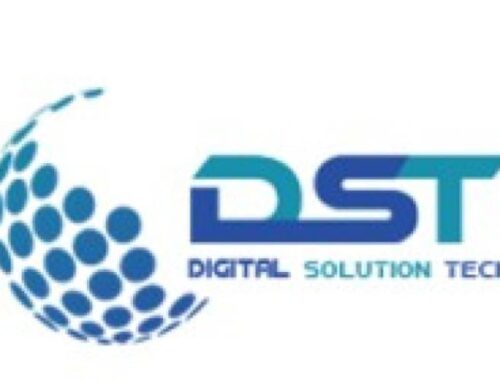In today’s digital-first marketplace, attracting visitors to a website is only the first step. Turning clicks into customers requires a nuanced and effective strategy. Businesses invest heavily in driving traffic, but the true measure of success lies in conversions. Achieving this transformation involves understanding user behavior, delivering tailored experiences, and optimizing every stage of the customer journey.
The Power of First Impressions
When a user lands on a website, the first few seconds shape their perception. Visual appeal, ease of navigation, and relevant content establish trust and interest. A cluttered interface or slow-loading pages lead to missed opportunities, no matter how many clicks a business generates.
Strategically designed landing pages play a critical role. A clear and compelling value proposition, coupled with persuasive calls to action, encourages users to take the next step. Every element, from headlines to imagery, must resonate with the target audience. A seamless experience reduces bounce rates and ensures higher engagement.
Understanding User Intent
Not all clicks carry the same intent. Some users seek information, while others look for solutions or intend to make a purchase. Identifying user intent allows businesses to craft experiences that address specific needs. Tools like analytics platforms and heatmaps provide valuable insights into user behavior.
Segmentation further enhances this understanding. Dividing users based on demographics, behavior, or interests ensures tailored messaging and offers. Personalization strengthens connections, fostering trust and increasing the likelihood of conversion.
The Role of Content in Conversion
Content bridges the gap between interest and action. High-quality, relevant content educates, informs, and inspires trust. Blog posts, product descriptions, case studies, and testimonials guide users through the decision-making process.
Storytelling enhances engagement by creating emotional connections. Brands that articulate their values and demonstrate their benefits stand out in competitive markets. Strategic placement of content, combined with well-designed calls to action, nudges users toward desired outcomes.
Streamlining the Customer Journey
Complex or disjointed journeys deter users from completing desired actions. Simplifying the customer journey involves minimizing friction points and providing clear pathways. From navigation menus to checkout processes, every interaction must feel intuitive.
Mobile optimization is non-negotiable. With increasing numbers of users accessing websites via smartphones, responsive design ensures a consistent experience across devices. Easy navigation, quick load times, and mobile-friendly forms drive higher conversions in this segment.
Leveraging Social Proof
Trust influences buying decisions significantly. Social proof, such as reviews, testimonials, and user-generated content, builds credibility. Potential customers value the opinions of peers and existing users. Featuring these elements prominently on landing pages and product descriptions enhances confidence in the brand.
Case studies and success stories provide additional reassurance. By showcasing real-world results and customer satisfaction, businesses reinforce their value proposition. An authentic and transparent approach encourages users to move forward confidently.
Harnessing the Power of Analytics
Data-driven decision-making underpins successful conversion strategies. Analytics tools track user behavior, identify bottlenecks, and measure the effectiveness of campaigns. Metrics such as bounce rates, time on site, and click-through rates highlight areas for improvement.
A/B testing plays a vital role in optimization. Experimenting with different headlines, layouts, or calls to action reveals what resonates most with audiences. Continuous refinement, guided by data, ensures the highest possible conversion rates over time.
Building Trust Through Transparency
Trust is a cornerstone of successful conversions. Clear communication about products, services, pricing, and policies eliminates doubts. Transparent return and refund policies reassure potential customers, reducing hesitation.
Secure payment gateways and visible trust badges further instill confidence. Users expect their data to be protected, and meeting this expectation boosts conversion rates. Transparency and security combine to create a trustworthy online presence.
Engaging Through Retargeting
Not all users convert on their first visit. Retargeting campaigns re-engage visitors who leave without taking action. By displaying personalized ads based on previous interactions, businesses remind users of their offerings and encourage them to return.
Email marketing serves a similar purpose. Tailored email campaigns nurture leads, providing valuable information and exclusive offers. Staying top-of-mind through retargeting increases the chances of turning clicks into customers.
Creating a Sense of Urgency
Limited-time offers, countdown timers, and exclusive deals motivate users to act quickly. A sense of urgency taps into the fear of missing out, driving immediate conversions. However, authenticity is crucial. Overuse of urgency tactics leads to skepticism, reducing their effectiveness.
Combining urgency with value creates a powerful motivator. Highlighting the benefits of acting now ensures users see the opportunity as worth pursuing. When executed thoughtfully, urgency accelerates decision-making and boosts sales.
Optimizing Post-Click Experiences
The journey doesn’t end when a user clicks on an ad or link. Post-click experiences determine whether the user continues toward conversion. Relevant landing pages that align with the ad’s message ensure consistency and reduce drop-off rates.
Load times also play a crucial role. Slow-loading pages frustrate users, leading to abandonment. Optimizing speed and ensuring mobile compatibility enhance post-click experiences, keeping users engaged and moving toward conversion.
Continuous Improvement for Long-Term Success
Conversion optimization is an ongoing process. User preferences evolve, technologies advance, and market dynamics shift. Regular audits of websites, content, and strategies ensure continued effectiveness.
Feedback from customers provides valuable insights. Understanding pain points and addressing concerns fosters stronger relationships and higher satisfaction rates. By staying attuned to customer needs, businesses maintain their competitive edge in the digital landscape.
The Future of Conversions
As technology advances, new tools and strategies emerge for turning clicks into customers. Artificial intelligence, machine learning, and predictive analytics offer deeper insights into user behavior. Personalized experiences, powered by these technologies, become more precise and impactful.
Voice search and conversational interfaces also shape future conversions. Businesses that adapt to these trends ensure accessibility and convenience for their users. The focus remains on delivering seamless, engaging, and relevant experiences.
Conclusion
Turning clicks into customers requires a combination of strategy, creativity, and continuous improvement. From understanding user intent to optimizing post-click experiences, every step of the journey demands attention to detail. By prioritizing user needs, leveraging data, and embracing innovation, businesses achieve sustained success in converting clicks into loyal customers
visit us : https://digitalsolutiontech.com/







Leave A Comment